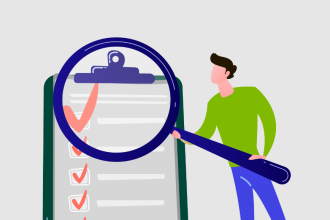As the cost of a college education continues to rise, more students rely on financial aid to help them pay for their education. Students acquire financial aid to help them pay for their education at a post-secondary institution in the U.S.
Scholarships, grants, work-study jobs, need-based prizes, and student loans are among the financial aid options accessible to students.
If you went to college and took out loans, you may have had private student loans, public loans, state loans, school loans, or a mix of the above. Varied loan types have different terms and conditions, so understand what you’re getting into.
Here are some essential things to know before you borrow public student loans.
Top 5 Things To Consider Before You Take Out Public Student Loans
1. Type of Student Loans
If you have public student loans, go to www.nslds.ed.gov to get your loan information in one spot. Once you log in, you can get a list of your federal loans, including the student loan type and servicer information.
The organization that will bill and collect payments on your federal student loans is a loan servicer. Check your records or contact the financial aid office of the school you attended when you took out the loan for any other forms of loans.
Many college students supplement their award package with an unsubsidized or subsidized federal student loan, both of which are available by the federal government due to qualifying requirements and various limitations on federal financial assistance programs.
What To Know About Subsidized Or Unsubsidized Loans
A subsidized federal loan doesn’t have to be repaid until you graduate. Also, the government will cover the accrued interest for up to six months after graduation. A federal student loan that is not subsidized works similarly, but you’ll be liable for paying the interest.
You can also use private student loans to pay for college. These are available from credit unions, banks, and organizations, including colleges. However, because private loans have a variable interest rate, it’s better to repay the interest while still in school.
2. Options To Pay Back Your Student Loans
Repayment choices differ depending on the loan type. Most repayment options are available with federal student loans. Income-based repayment, extended repayment terms, ICR plans, and consolidation of several federal loans into one for repayment are all options.
These repayment alternatives usually result in a lower monthly payment. But they also result in a higher overall loan cost. In addition, federal loans may be forgiven, canceled, or dismissed in certain circumstances.
If you have private student loans, check with your lender to see what repayment options are available.
3. Loan Repayment Terms and Conditions
It’s essential to know more about all of your loan payment alternatives. Look for ways to cut the cost of your loans by:
- Paying more than the minimum monthly payment
- Understanding your student loan forgiveness, cancellation, and discharge options.
- Enrolling in automatic debit to lower interest charges
4. The Interest Rate On Your Loans
A student loan is similar to any other loan in that it is money borrowed with interest that must be repaid. If you don’t pay your interest, it will be added to your total loan sum.
Some loans come with grace periods, which provide you time after you graduate before you have to start paying back your debts. On the other hand, some loans require immediate payments once you graduate or stop being a full-time student.
If you are a recent graduate or have recently left school, consider paying your student loans’ interest during your grace period to save money on your overall loan cost.
5. Check Your Student Loan Balance
After discovering the types of student loans you have, you’ll need to figure out how much money you owe overall. This information will assist you in creating a repayment strategy for your loan.
Your federal loan balance can be viewed at www.nslds.ed.gov. You’ll need to contact your lender about your other loans.
Final Thoughts
Before you take out student loans, you must know everything you can before making a move. This guide is the first step to knowing what you’ll face or go through when you take out your loans and start repaying them when the time is due.
However, you should speak with an expert before making your final decision. Sometimes, it may not be necessary to go for a loan. And if you should borrow, you’ll need to know the responsibilities that come next.





![How To Make Student Loan Payments [A Quick Guide]](https://thenewsgod.com/wp-content/uploads/2022/04/alexander-mils-lCPhGxs7pww-unsplash-150x150.jpg)








